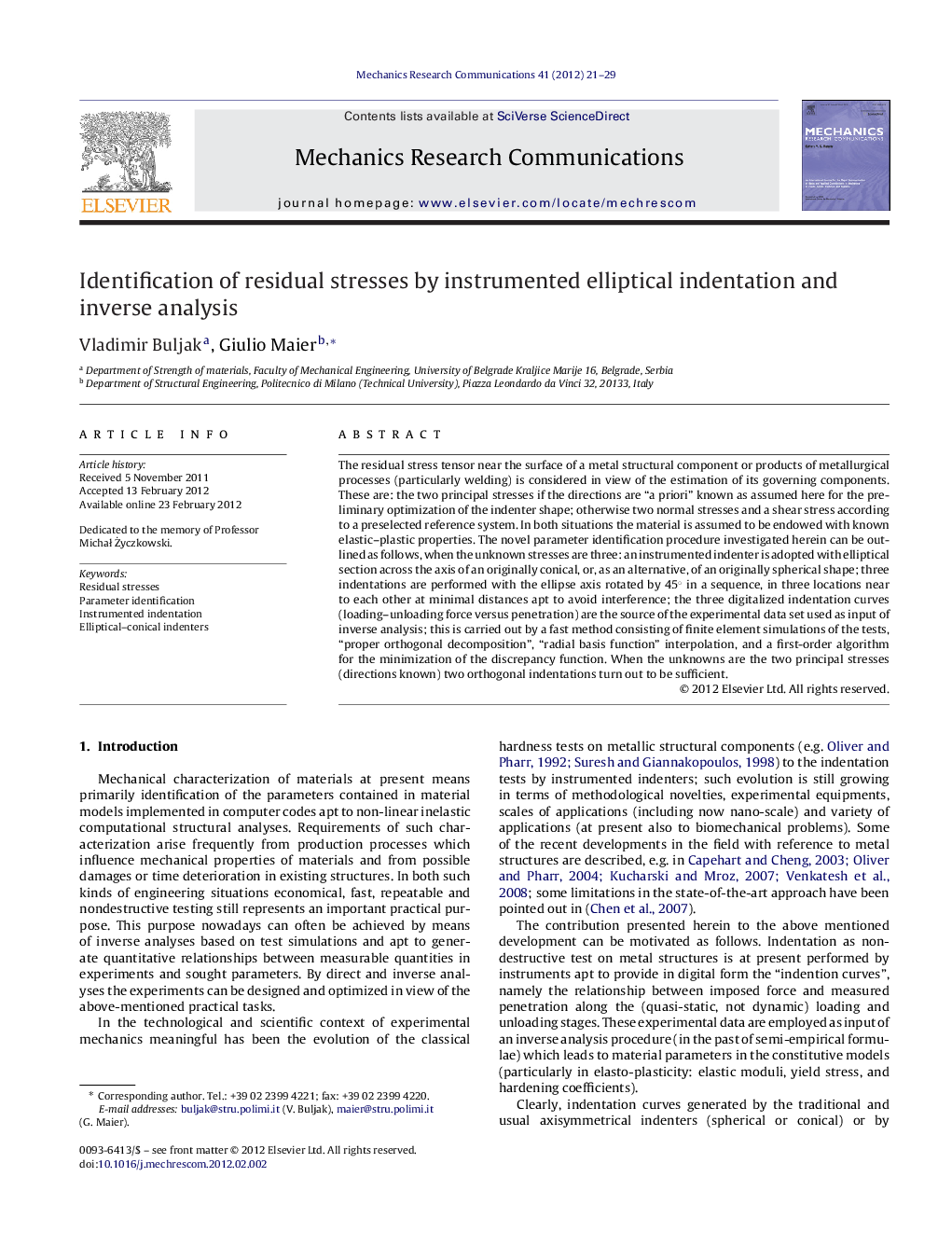| کد مقاله | کد نشریه | سال انتشار | مقاله انگلیسی | نسخه تمام متن |
|---|---|---|---|---|
| 801005 | 1467695 | 2012 | 9 صفحه PDF | دانلود رایگان |

The residual stress tensor near the surface of a metal structural component or products of metallurgical processes (particularly welding) is considered in view of the estimation of its governing components. These are: the two principal stresses if the directions are “a priori” known as assumed here for the preliminary optimization of the indenter shape; otherwise two normal stresses and a shear stress according to a preselected reference system. In both situations the material is assumed to be endowed with known elastic–plastic properties. The novel parameter identification procedure investigated herein can be outlined as follows, when the unknown stresses are three: an instrumented indenter is adopted with elliptical section across the axis of an originally conical, or, as an alternative, of an originally spherical shape; three indentations are performed with the ellipse axis rotated by 45° in a sequence, in three locations near to each other at minimal distances apt to avoid interference; the three digitalized indentation curves (loading–unloading force versus penetration) are the source of the experimental data set used as input of inverse analysis; this is carried out by a fast method consisting of finite element simulations of the tests, “proper orthogonal decomposition”, “radial basis function” interpolation, and a first-order algorithm for the minimization of the discrepancy function. When the unknowns are the two principal stresses (directions known) two orthogonal indentations turn out to be sufficient.
Journal: Mechanics Research Communications - Volume 41, April 2012, Pages 21–29